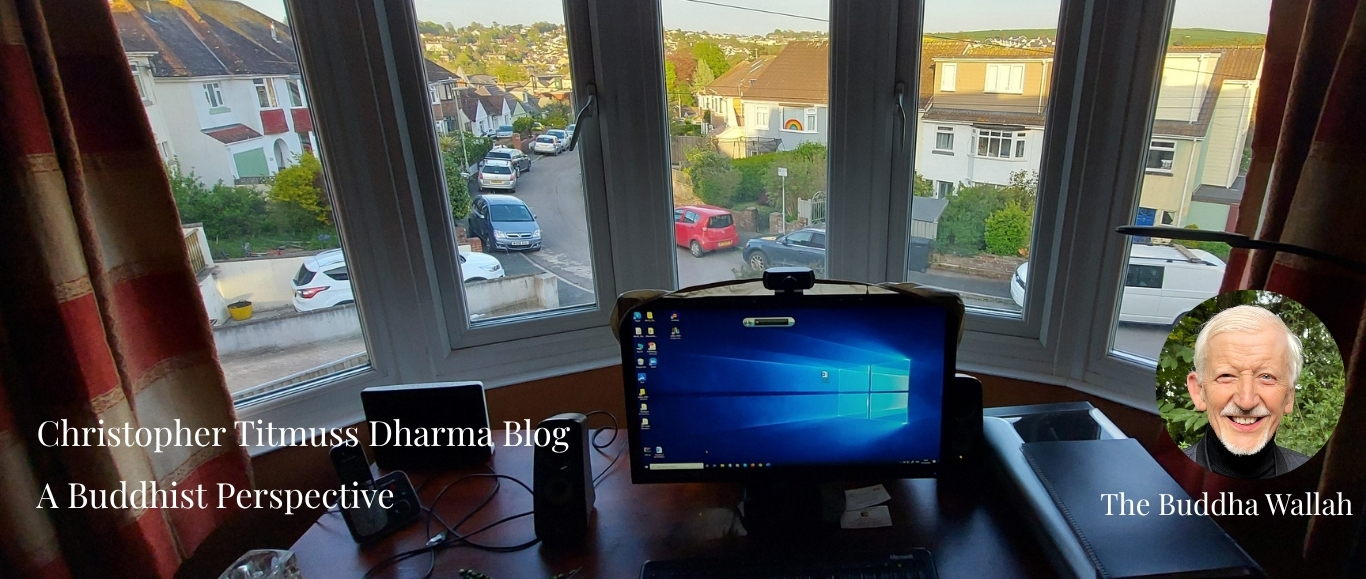Every other evening in Sarnath, the teachers, facilitators, co-ordinators met together over a meal to discuss a feature of the dharma. One evening we looked into the important refrain that appears four times in the Satipatthana Sutta (Discourse on the Appllications of Mindfulness – one of the most revered statements of the Budha on mindfulness and insight.
You could get the impression that the Buddha taught us to be mindful day and night in every single moment. The Buddha realised that would set an impossible target for us, no matter how dedicated we are to the practice, whether monk, nun or householder.
The Buddha spoke of mindfulness to the extant necessary for knowledge and full awareness in order to abide independent [anissito – literally is “not leaning on anything”) ] and does not cling to anything in the world (any more) [na ca kinci loke upâdiyati].
Below is the Bhikkhu Bodhi translation of the refrain from Satispatthana Discourse (Sutta X in MIddle Length Discourses) followed by Jenny Willks in Totnes and Hans Gruber in Hamburg. The differences between the three are slilght. The refrain makes it clear that mindfulness is not an end in itself but is established for knowing and clarity. The Buddha said he meditates on the body and its nature of arising and passing
Bhikkhu Bodhi translation
Or mindfulness that ‘there is body’ is simply established In him to the extant necessary for bare knowledge and mindfulness. And he abides independent, not clinging to anything in the world.
Jenny Wilks translation
So my translation of this whole sentence (bearing in mind different word order in Pali) is something like:
‘Or else [va pana] mindfulness [sati] of this [assa] ‘there is body’ [atthi kayo’ti] is [hoti] established [paccupatthita] as far as is necessary [yavad-eva] to a sufficient amount for insight [ñana-mattaya] and a sufficient amount for firm mindfulness [patissati-mattaya].
This may be rendered as ‘Or else mindfulness of the body is established to the extent needed for knowledge and further awareness’.
Hans Gruber translation
‘Atthi k?yo’ ti v? panassa (i. e. pana `ssa) sati paccupatthit? hoti, y?vad-eva ñ?na-matt?ya patissati-matt?ya. anissito ca viharati na ca kinci loke upâdiyati.
My translation (implied or alternative meanings are in round brackets and the original Pali-words in square brackets):
Or even [vâ pana-] the mindfulness [sati] of this (fact) [-(a)ssa; the genitive of ayan “this”], (namely) – “It is (merely or just or no more than) a body” [‘Atthi k?yo’ ti] – becomes apparent [paccupatthit? hoti] (to the practitioner) for mere (i. e. just exactly for) insight [ñ?na-matt?ya] (and) for mere (i. e. just exactly for) prolonged (i. e. further) mindfulness [patissati-matt?ya]. And he abides independent [anissito ca viharati] and does not cling to anything in the world (any more) [na ca kinci loke upâdiyati].
So again, the whole last part of the refrain is in the original:
‘Atthi k?yo’ ti v? panassa (i. e. pana `ssa) sati paccupatthit? hoti, y?vad-eva ñ?na-matt?ya patissati-matt?ya. anissito ca viharati na ca kinci loke upâdiyati.
Commentary of Hans:
“Or even”:
i. e. the liberating insight through mindfulness can go further than seeing the first lakkhana, i. e. constant arising and passing.
“the mindfulness of this (fact, namely) – “It is (merely, just or no more than) a body” – becomes apparent (to the practitioner):
i. e. that seeing through mindfulness of the fact that there is just a body – i. e. just a physical process without it being “I” (in the sense of the subconscious clinging to the body “this I am”) or “mine” or “my self” (in the sense of the clinging in the form of a theoretical view “this is my self”) – becomes completely clear or “visible”, without doubts or concepts.
“for mere (or just exactly for) insight (and) for mere (or just exactly for) prolonged (or further) mindfulness”:
i. e. that described seeing through mindfulness that there is just a body is exclusively aimed at liberating insight and an even deeper seeing through mindfulness (since that described insight just means a first seeing of anatta; here there still can be a holding onto the concept “but the body itself is”; so seeing anatta can still be further developed).
“And he abides independent and does not cling to anything in the world (any more)”:
i. e. that increasing understanding of anatta means true freedom and being anchored.
I can only express appreciation for the care and precision in the very language of the Buddha’s teachings. Dharma friends such as Asaf, Hans, Jenny and Vimalo continue to be extraordinarily helpful in revealing the depth and subtlety in translating from the Pali to the English, as well as the masterful sutta projects of Bhikkhu Bodhi. The Buddha is our guru, after all. We pay respect to our guru when we take notice of what he says in the general and in the detail.

